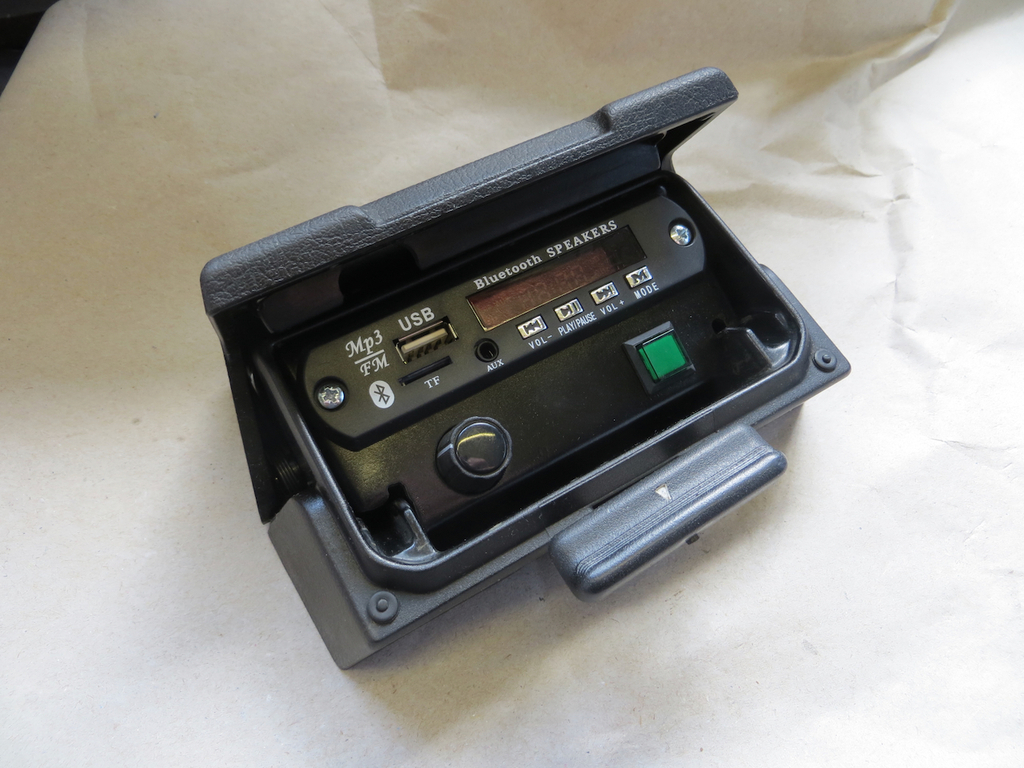Back at the subwoofer and crossover discussion, let’s add a sub to our system.
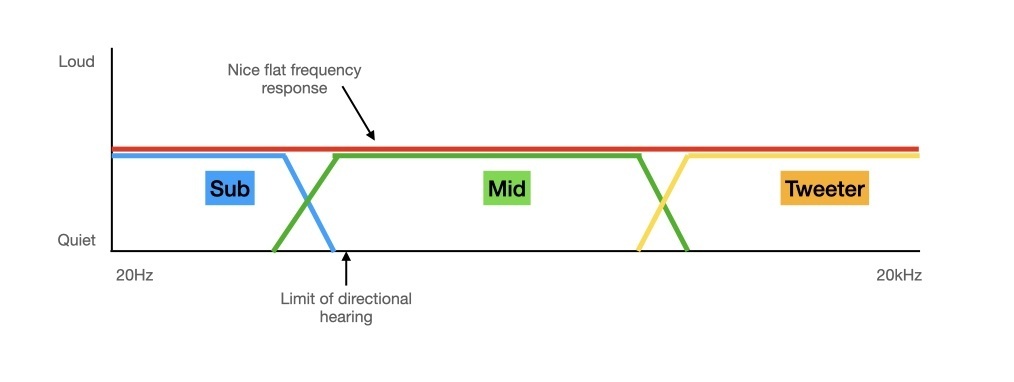
That was easy. Thanks and bye!
Except, if this is my sub in my car it’s nothing like that picture.
Before we go any further, what’s that ‘limit of directional hearing’ thing I’ve added to the diagram? And how do your ears locate where a sound is coming from anyway?
Warning! We are going to get kicked into the weeds here. A long way into the weeds! If you can’t be bothered gardening feel free to skip past the pictures of the heads and wobbly lines. Oh and everything below is a guess on how I think the brain interprets the sounds it hears. I have no idea if this is right but it makes sense to me.
Let’s do the ‘how do your ears locate where a sound is coming from’ question first. Simple answer - I’ve not a clue. But a really interesting thing happened at work a couple of years ago that tells us part of the answer.
We had a fault in one of our TV edit suites. The complaint was that the left speaker was louder than the right. And it seemed to be true. The left speaker was louder than the right.
So we swapped the left and right speakers over. If the cause was in the speaker itself the fault would swap to the right side. It didn’t so the speakers were fine. It must be that the audio feed to the left side was louder. Right? So we tested the feeds and they were exactly the same level.
Oh dear. Now we are in trouble. The left side clearly sounds louder but the feeds are exactly the same and the speakers were both fine…
Flat screen TVs are slow. There is a lot of digital processing that takes a fair amount of time to perform. It’s easily enough to put the lip sync out. So our edit suites have delays in the audio path to correct for lip sync errors. In this edit suite the delays were wrongly set on one channel and the left speaker was EARLIER than the right. Not LOUDER but EARLIER. Your brain interprets the different delays as positional information and makes the earlier sound appear louder to your consciousness. Oh wow. That’s interesting. Your brain must be unbelievably sensitive to time delays between sounds arriving at your ears.
So let’s put some numbers on this. The speed of sound is 343 meters per sec. Your head is about 20cm wide. Well mine is, yours might be different. If a sound is coming from your left side how long after reaching your left ear does it take to get to your right ear?
I make that 0.00058 seconds. Or 580 nano seconds. Do you have a natural feeling of how long 580nS is? No, me neither. I don’t think the human brain can accurately time something that short. So something else must be going on. I think it’s phase difference that your brain is detecting.
So if your head is 20cm wide and the speed of sound is 343m/S there is a frequency at which one wave length fits nicely between your ears. Like this…
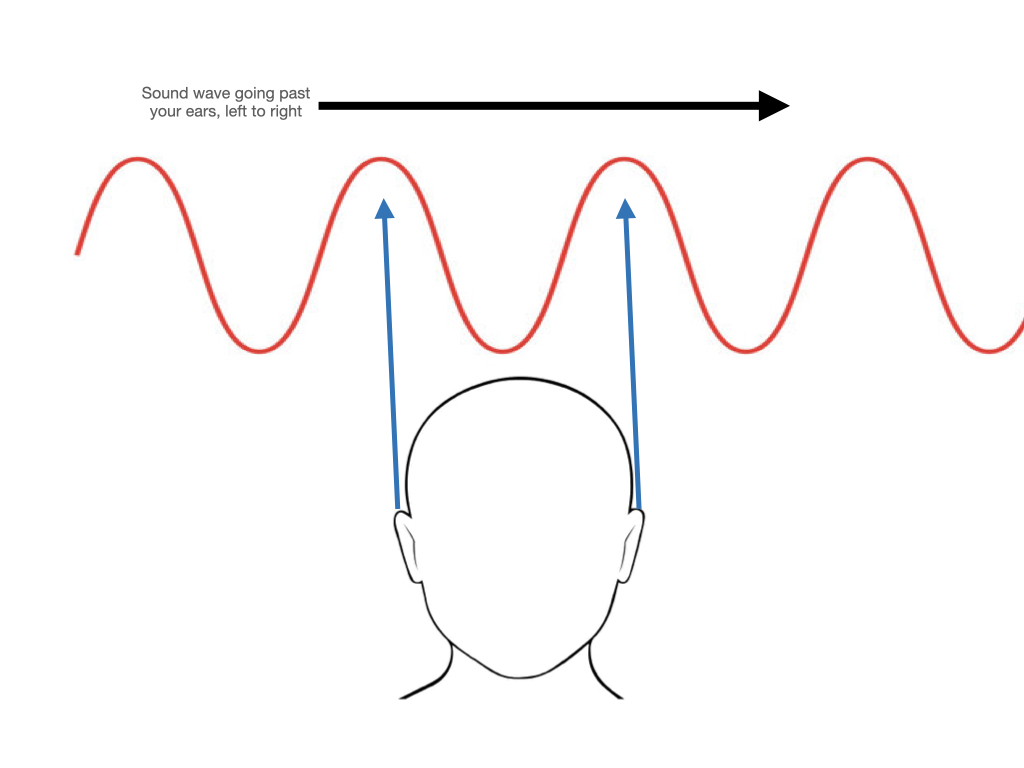
What is that frequency?
Well I can’t be bothered to work it out so I asked the internet and the answer is… 1715Hz. So one cycle of 1715Hz is the same length as the distance between your ears. Well now. That’s a frequency right in the middle of your hearing band *. It’s in the most sensitive bit too. I don’t think that’s a coincidence.
* Hold on James… You said hearing goes from 20Hz to 20kHz so surely 10kHz is in the middle? Annoyingly it’s logarithmic so 100Hz sounds like a low frequency, 1000Hz sounds like it’s in the middle, and 10000Hz sounds like a high frequency. Sorry about that. It does make life awkward if you are an audio engineer but you soon forget about it and get on with life.
Anyway, that doesn’t help with directional hearing. At 1715Hz there is positive pressure at both ears at the same time.
Look what happens if we half that frequency.
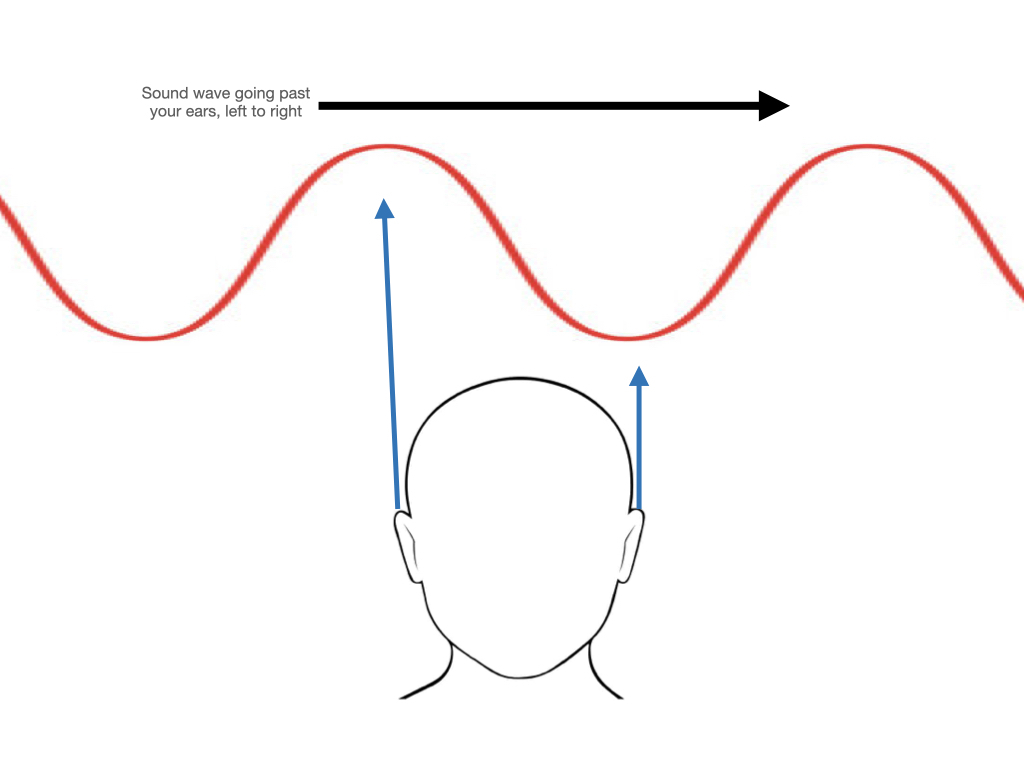
Now we have positive pressure at your left ear and negative pressure at your right ear. If you added the output of your ears together 1715Hz would get louder and 857Hz would cancel out and disappear.
This still doesn’t help locate where the sound is coming from. But wouldn’t you know it, that’s actually true in real life. If there is a pure sine wave being played in a room you really can’t tell where it’s coming from.
We line up broadcast equipment using 1000Hz tone. If you have a speaker in a room with line up tone coming out of it you’ll really struggle to work out where it’s coming from. It’s quite frustrating.
You need a wealth of frequencies for your brain to put it all together and work out where a sound is located. Some frequencies get cancelled out depending on the direction the sound is coming from. Turn your head a little and different frequencies get cancelled out. I think that’s how you brain can work out where a sound is coming from, at least a part of how it does it.
That’s also why some of those ‘don’t get run over’ warnings on trucks include a hissing noise. It's broadband noise so your brain can work out where it is.
Of course you aren’t aware of these cancelling frequencies (assuming that’s actually how your brain does it). All your conscious knows is that there is a sound and what direction it’s coming from.
So, to summarise, I don’t think your brain is sensitive to the time differences between sounds arriving at your ears, but I think it’s very good at picking up phase differences.
Now we’ve had a decent guess at how your brain locates the source of a sound we can get back to that other question, what’s that ‘limit of directional hearing’ thing all about?
The rule of thumb is that you can put a subwoofer anywhere in a room because you can’t tell where low frequencies are coming from.
Head picture again but with a really low frequency….
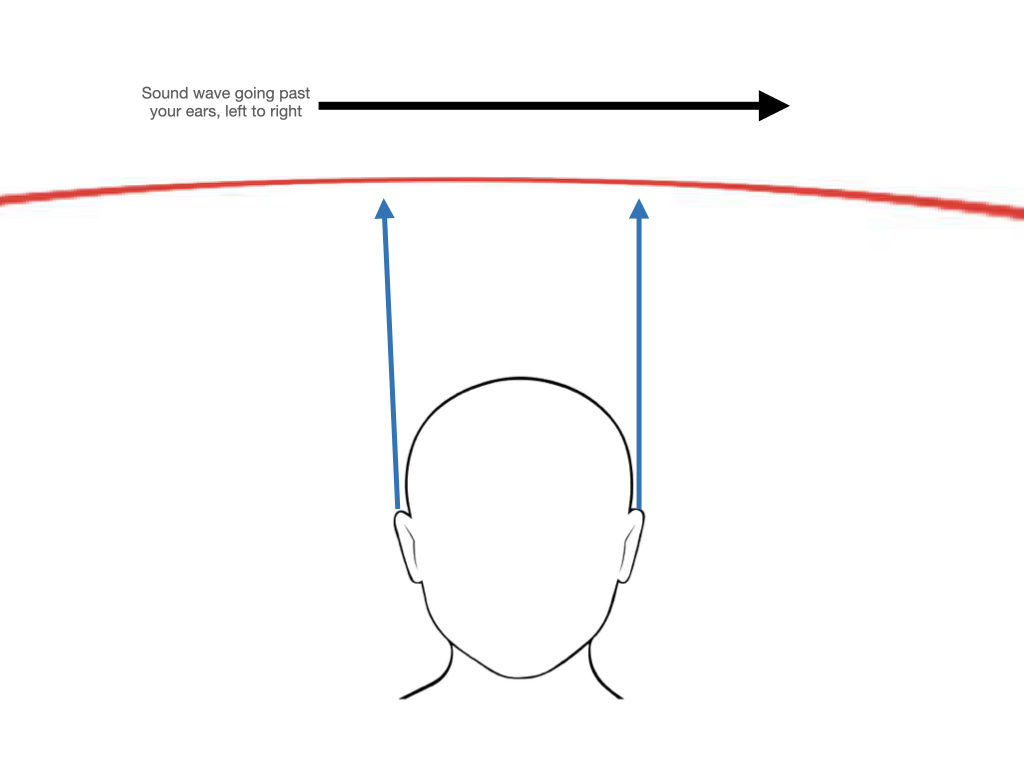
If I’m right about how all this works then really low frequencies haven’t enough phase difference between your ears for you brain to work out the location. I’m not going to put a number on it because I really don’t know at what frequency a person becomes aware of the location of a sound. It probably depends a bit on the person. But that’s what the note on the drawing is all about. Below that frequency you can’t tell where the sound is coming from so you can put the speaker anywhere you want.
My problem in the MR2 is that the dash speakers are so small that they don’t play to very low frequencies. That means that the sub has to play higher to not get a hole in the frequency response.
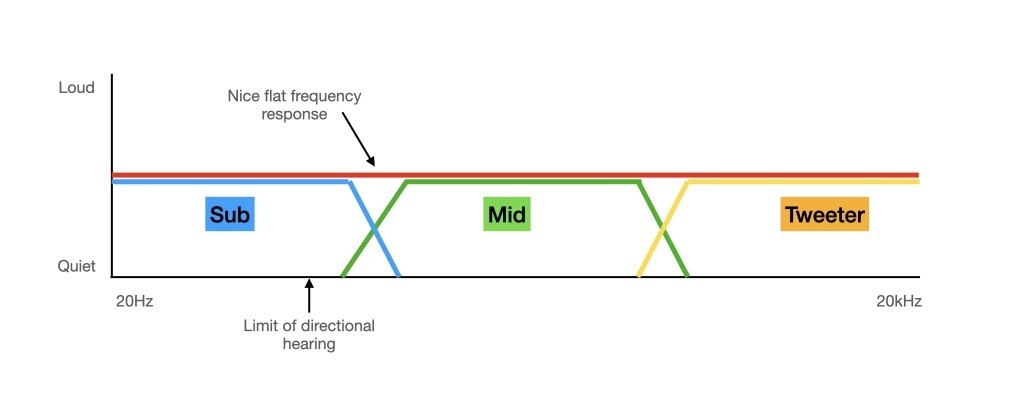
And that means I can hear where the subwoofer is and that breaks the illusion and annoys me.
I can lower the crossover frequency for the sub but then I have a hole in the response.
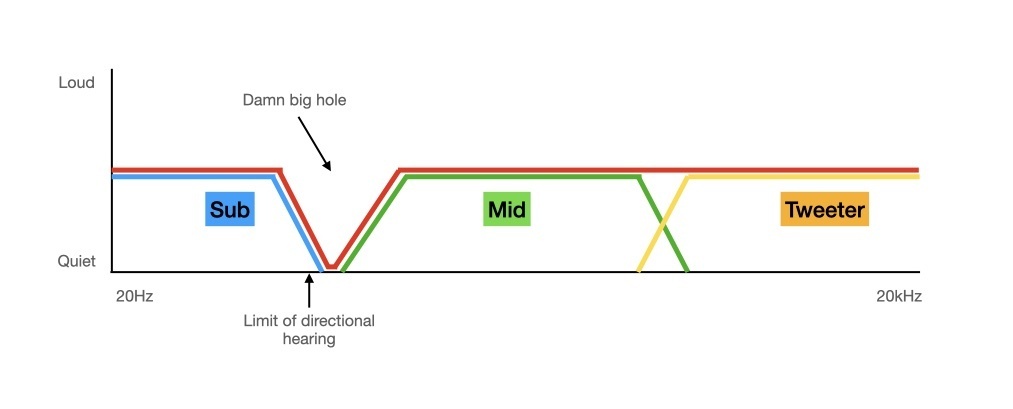
That sounds fine with some music and awful with other bits.
To make matters worse, because the sub driver is mounted in a board with no space behind it it can’t get as low as I’ve drawn. It gets low enough that you can feel it on some tracks but it would be better if it had the volume of a car boot behind it.
There is a control on the vibe amp called ‘Bass Boost’ which chucks a load of extra oomph in at about 45Hz. So I’ve got a load of that dialled in to compensate for the terrible cabinet design and lack of real low end bass.
I can’t prove it but I suspect I’ve wound up with something like this.

It’s a compromise where I have a peak to make up for the lack of low extension and a bit of a hole at the crossover frequency so it’s not too noticeable that the sub is behind me.
Whatever the compromises, it sounds nice. In fact I’m having a bit of a problem in that every time I go to do some work on the car I wind up spending a while sitting in it listening to music. It’s not helping my throughput.
James

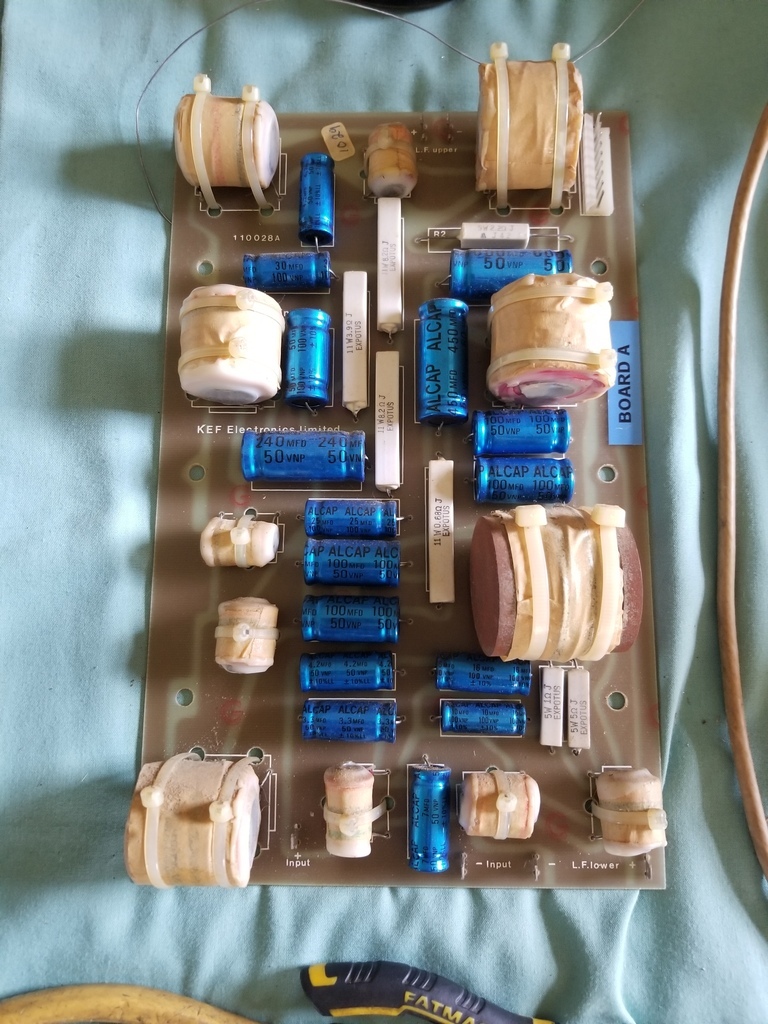










 I only lasted a few minutes as the high pitched whine did my head in, seemingly I was the only one in the room to hear it.
I only lasted a few minutes as the high pitched whine did my head in, seemingly I was the only one in the room to hear it.
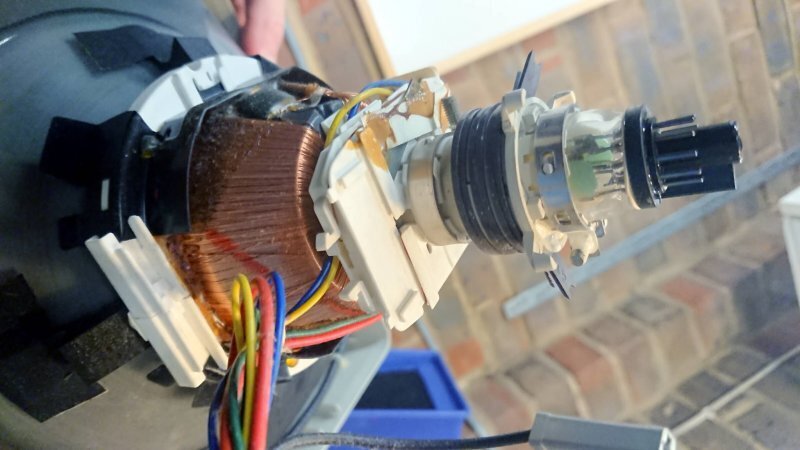
 about that time I was still messing with old valve radio's and a bit of basic electronics and just getting into Hi-Fi
about that time I was still messing with old valve radio's and a bit of basic electronics and just getting into Hi-Fi 






 makes sense as far as I understand it. Thanks for taking the time to lay it out
makes sense as far as I understand it. Thanks for taking the time to lay it out 